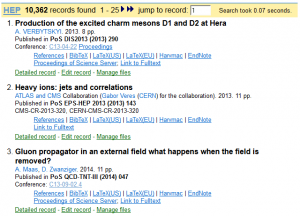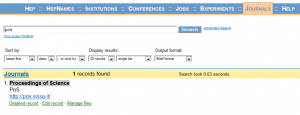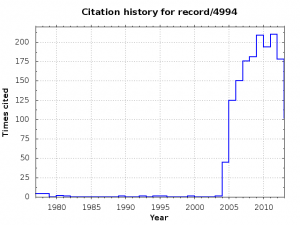Recently in consultation with our Advisory Board we changed how we select astro-ph articles from arXiv, to optimize collection of the content our community needs.
Since then we have been analysing the results of the new selection process and listening to your feedback. As a result, we are making an important adjustment to the selection policy to better suit your needs.
As of the past Friday, we are again harvesting 100% of astro-ph.CO content. This eliminates the possibility of missing relevant papers. We will soon fill in any cosmology content that was not added to INSPIRE in the past few weeks. We are working to provide the most accurate and comprehensive citation data, so no articles and citations are lost.
INSPIRE will now add content from a subset of astro-ph that is relevant to our community:
- astro-ph.HE in its entirety
- astro-ph.CO in its entirety
- All pre-prints which are cross-listed to astro-ph.HE and astro-ph.CO, as well as astro-ph preprints from other sub-categories which are cross-listed to any of the core INSPIRE categories.
- As always the case, articles relevant to HEP will be added on a case-by-case basis.
Astro-ph authors should also be aware that because INSPIRE’s focus is HEP, our automated tools are slightly less effective at correctly attributing astro-ph articles to their authors, and extracting all the references.
Consequently, we would like to call on astro-ph authors to ‘claim’ these articles in their profiles (check here) and submit corrections via the reference correction form if any references need improvement.
As always, we will keep an eye on the results, and make sure we are making optimal use of our resources to provide the best service possible for our user community.
We apologize for any confusion or concern during the pilot phase and we are most grateful to the community in supporting the way we adjust our services. We are eager to receive your feedback as we work together to make INSPIRE always better.
The INSPIRE Management Team








